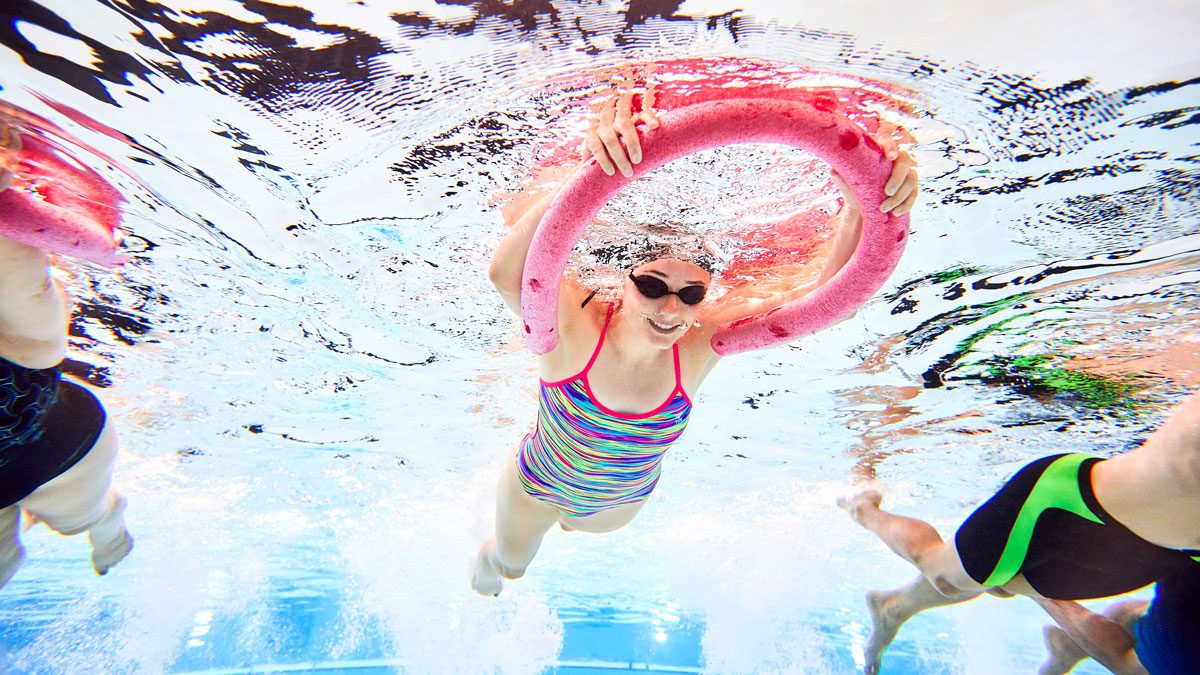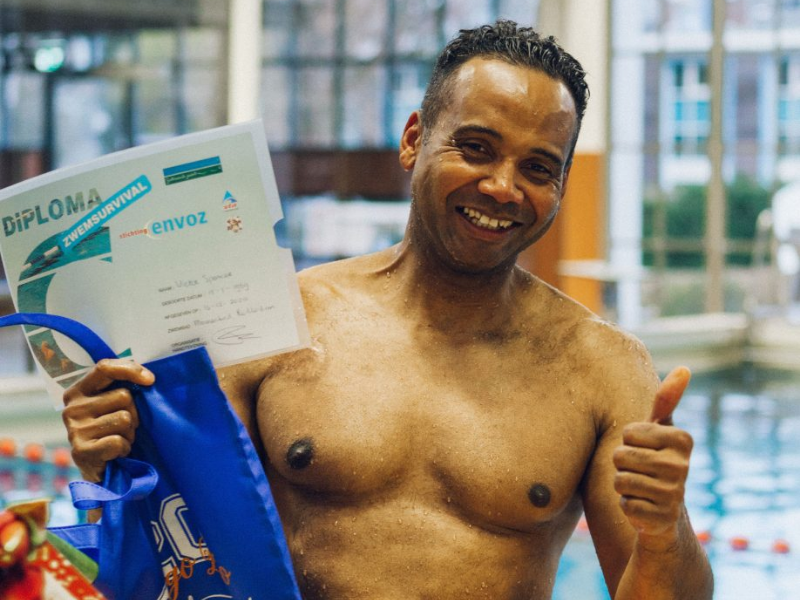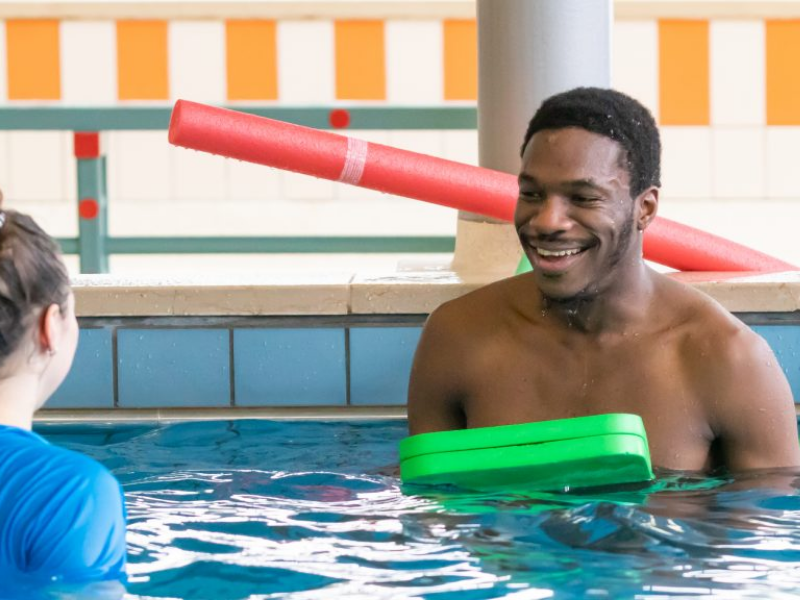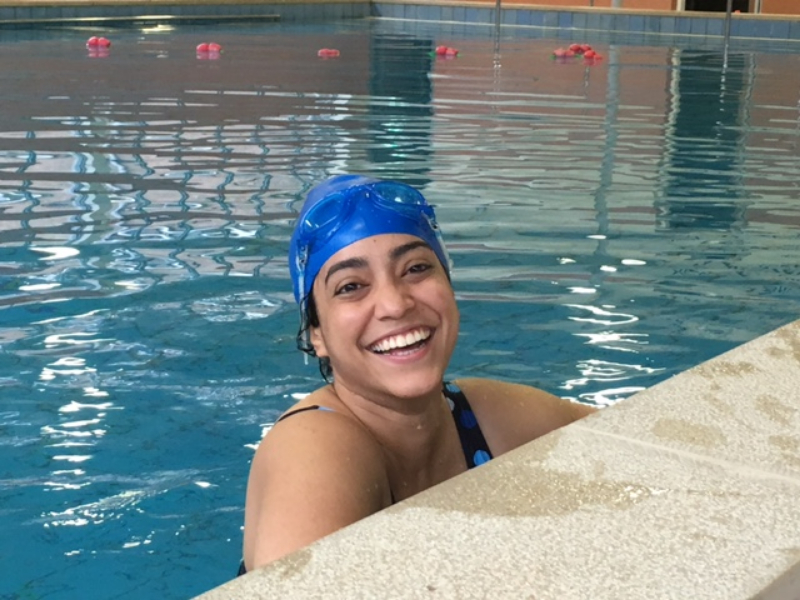Learn how to float

Floating is second nature
Human beings float by nature if there is oxygen inside the lungs. How an individual floats is determined by the buoyant force from water and the pull of gravity. It varies considerably between swimmers. It requires technique adjustments because it interacts with any movement principle. This article explains floating from a physics point of view.
Basic Physics of Flotation
When an object floats in dense fluid, it is affected by two forces. One is the ever-present force due to gravity and the other is the buoyant force, a force exerted by the fluid on the object. When the object is symmetrical, such as a rectangular block of Styrofoam, the two forces coincide. When the object floats, the buoyant force equals the gravitational force. Since the floating object displaces its weight in fluid (Archimedes’ Principle), equilibrium is reached and the Styrofoam block rests at the surface in the fluid. The water “supports” the weight of the object. This simple event is illustrated in Figure 1. Confusion often reigns between the roles of the volume and the weight of the water displaced. Archimedes’ Principle is appropriate to understand what occurs. It commonly is stated as follows:
When a body is immersed in a fluid, it experiences an upward buoyant force equal to the weight of the fluid displaced.
How we teach you how to float
All new swimmers who join Your Personal Swim Coach start at the first level ‘Water Introduction’. In approximately 10 sessions you will be able to float independently and confidently on your front and back. these session take place in warm and shallow water.
“The feeling of floating is freedom”
Other articles you might like
Diploma system
Your Personal Swim Coach lessons are structured around the Dutch ABC Diploma curriculum. Find out how it works and what all of them entail!
Floating in swimming
The science of swimming. Do people float better in salt water in the sea, or fresh water in the swimming pool? And other questions around floating are answered in this article.
Our adult swim classes
Your Personal Swim Coach will help you become a more confident you, a stronger, fitter and healthier you, a happier, care-free you and ensure your success in learning to enjoy and feel safe in and around water!
Water Introduction
If you cannot swim at all and are fearful and/or challenged in water generally.
You took classes before and failed or it has been a very long time ago.
Intermediate
You can swim comfortable in shallow water, however deep water gives you discomfort.
This level requires for you know all the 4 basic strokes and you have had swim lessons before.
Advanced
If you have no issues in deep water and able to swim more than 200m without getting exhausted.
You want to become fitter and stronger and swimming is your weekly workout.



